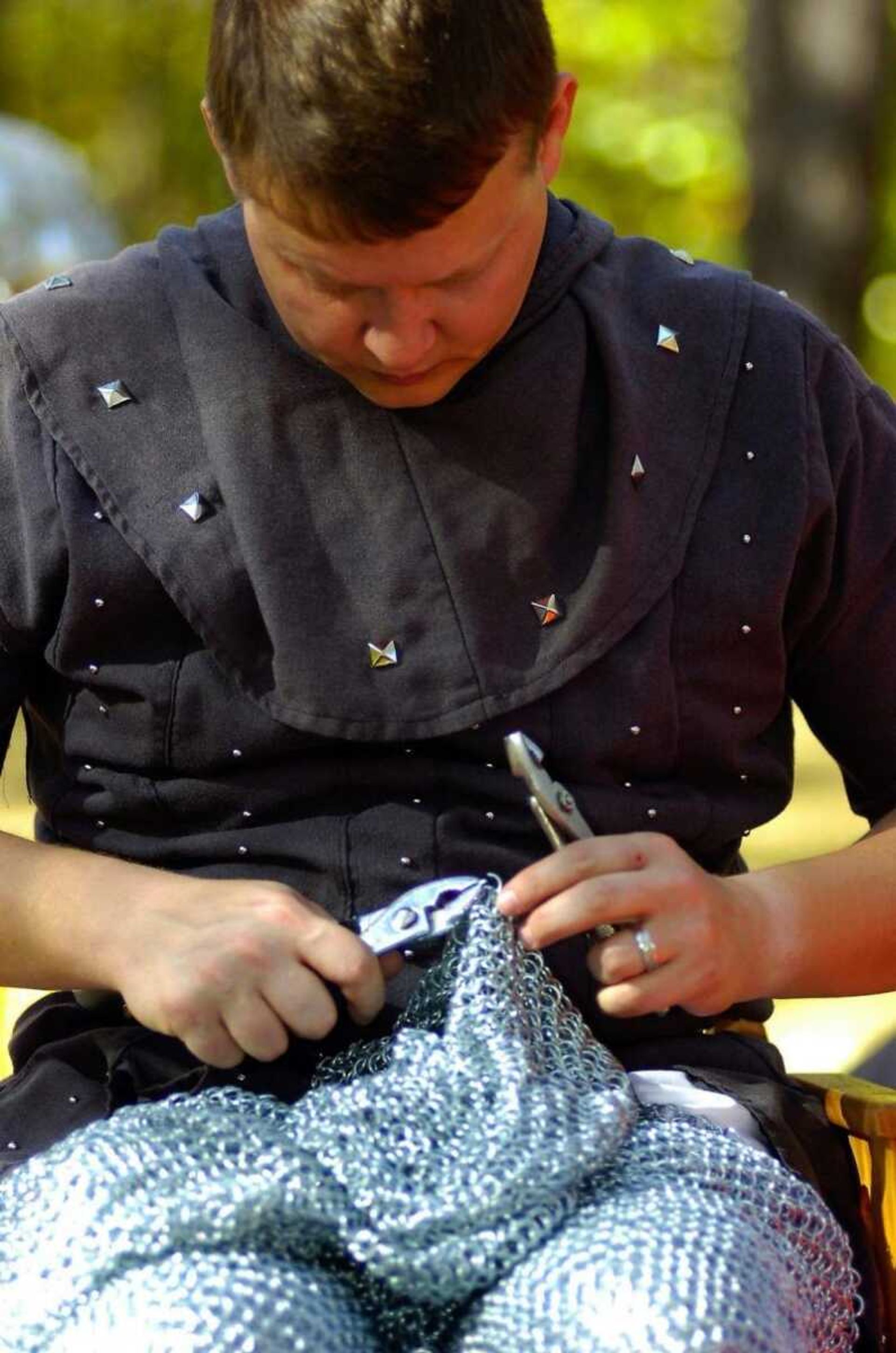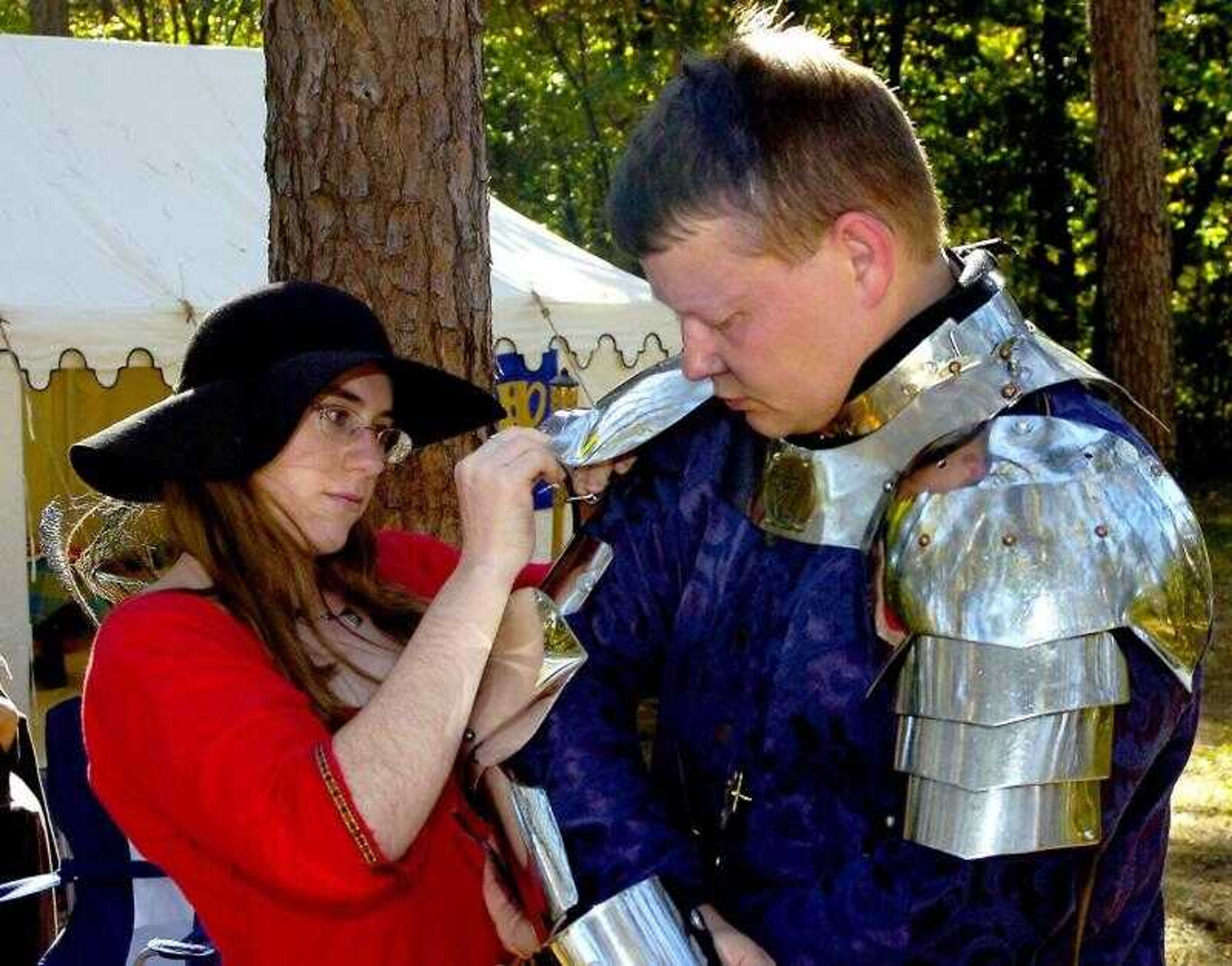Men of steel: Age of chivalry re-enactors exhibit full metal combat
JEFFERSON CITY, Mo. ¿-- The sound of steel-on-steel rings in the air. One can't help but be drawn in. In full, 80-pound armor and wielding real swords, the Shire of New Exeter's demonstrations are not choreographed. "It's real exhibition of what sword play would have been like," said Chris Adams...
JEFFERSON CITY, Mo. ¿-- The sound of steel-on-steel rings in the air.
One can't help but be drawn in.
In full, 80-pound armor and wielding real swords, the Shire of New Exeter's demonstrations are not choreographed.
"It's real exhibition of what sword play would have been like," said Chris Adams.
The Jefferson City-area division of the Adrian Empire Inc. recently held an encampment to introduce newcomers and the curious public to combat tournaments, archery and arts and science demonstrations.
"You are using a real sword," Adams said gravely. "There's still pain and risk involved.
"It's not life and death, but you'd be surprised how your body reacts."
Adams, who develops e-learning programs in his "real" life, plays Lord Christopher Blackthorne, viceroy of the Shire of New Exeter.
"This is a chance to be who you've always wanted to be," he said. "And it's relaxing, a chance to not worry about mundane responsibilities."
The live-action fighting attracted Adams to re-enacting while in high school. But he soon gained a fascination of the period's arts and sciences, learning to weave chain-mail and design wooden furniture himself.
"Medieval re-enacting is not learning about history by reading a book, but history by doing," Adams added. "Until you've sat down and woven chain-mail yourself for several months, you don't realize how much work it took, even using modern equivalents.
"And fighting in the armor, you feel what these guys were dealing with."
Adams formed the local shire in January with about a dozen Jefferson City-area members. The shire will be busy with demonstrations at schools and youth programs through the winter.
Dozens of medieval re-enactment groups exist -- specific ones focus on the Vikings or the Napoleonic age, while general groups, like the Society for Creative Anachronism, span from the Ancient Romans to the 1600s.
The Adrian Empire, because of its special interest in the Age of Chivalry, offers a smaller, social atmosphere. The Western European culture between the years of 1066 and 1603 is recreated by this national re-enactment group.

At the heart of all the activities, from live steel combat to feast preparations, is the Arthurian-legend chivalry and personal integrity.
"You can see into someone's soul when you see how they behave on the [battle]field -- whether he cheats or acts honorably -- it's a testimony to his character," Adams said.
That's why the Adrian Empire has set strict rules, including the skill-based divisions.
In the heat of one-on-one combat or amid a chaotic melee, the same adrenaline drives a participant. And there are no referees, so blows are counted on an honor system.
"If you play with these weapons and go outside the rules, someone could get hurt badly," Adams explained. "There's a thin line between enjoying yourselves and a trip to the hospital."
The first level of live steel combat is called Shinai, using hollow bamboo swords.
This practice without risk of injury allows those 13 and older a chance at novice swordplay, improving footwork, balance and control.
Once they have refined their skills, or reached the appropriate age of 16, members use rapiers for Renaissance-style competitions.
This is the "classic dueling, as seen in movies," Adams said. Like a step up from Olympic fencing, this level of live-steel combat has little armor but it's very flashy.
But the armored combat using steel, or a blunt sword, takes the most control and requires the heaviest armor. Participants must be 18 or older.
"This is the Middle Ages as it should have been, not necessarily as it was," he said. "But it's appealing to do things in a way you had hoped it would be done."
Connect with the Southeast Missourian Newsroom:
For corrections to this story or other insights for the editor, click here. To submit a letter to the editor, click here. To learn about the Southeast Missourian’s AI Policy, click here.









